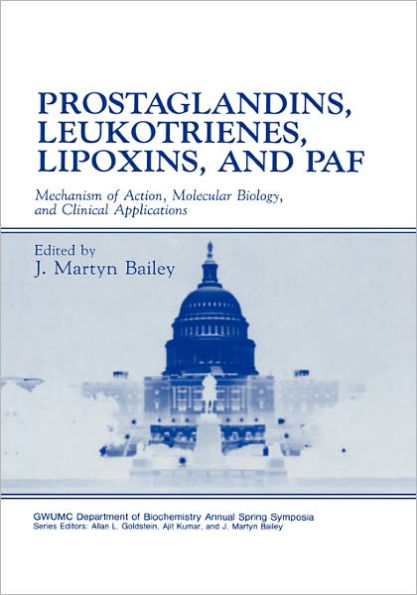5
1
9780306440557


Prostaglandins, Leukotrienes, Lipoxins, and PAF: Mechanism of Action, Molecular Biology, and Clinical Applications / Edition 1 available in Hardcover

Prostaglandins, Leukotrienes, Lipoxins, and PAF: Mechanism of Action, Molecular Biology, and Clinical Applications / Edition 1
- ISBN-10:
- 0306440555
- ISBN-13:
- 9780306440557
- Pub. Date:
- 01/31/1992
- Publisher:
- Springer US
- ISBN-10:
- 0306440555
- ISBN-13:
- 9780306440557
- Pub. Date:
- 01/31/1992
- Publisher:
- Springer US
219.99
In Stock

Product Details
| ISBN-13: | 9780306440557 |
|---|---|
| Publisher: | Springer US |
| Publication date: | 01/31/1992 |
| Series: | Gwumc Department of Biochemistry and Molecular Biology Annual Spring Symposia |
| Edition description: | 1991 |
| Pages: | 461 |
| Product dimensions: | 7.01(w) x 10.00(h) x 0.04(d) |
From the B&N Reads Blog
